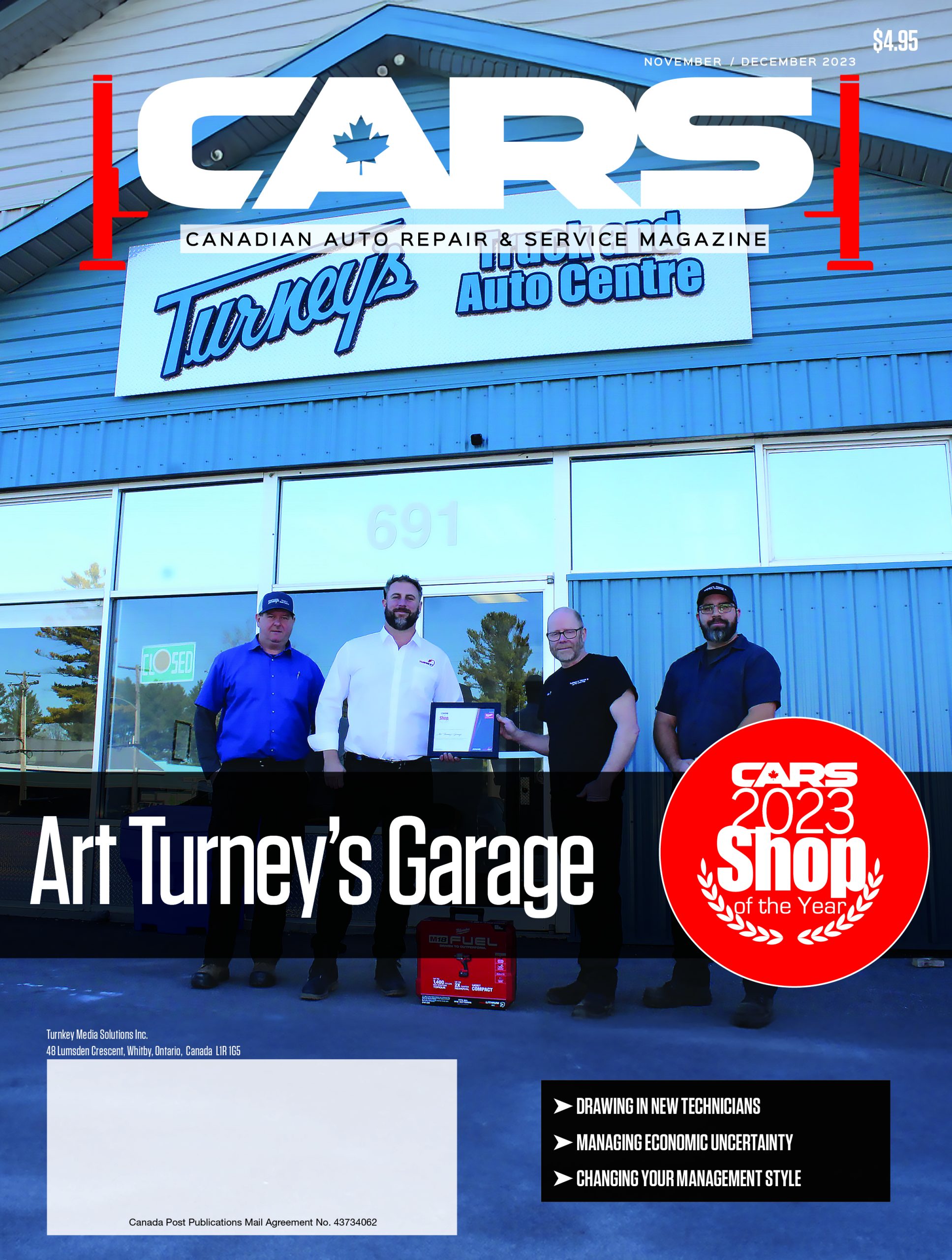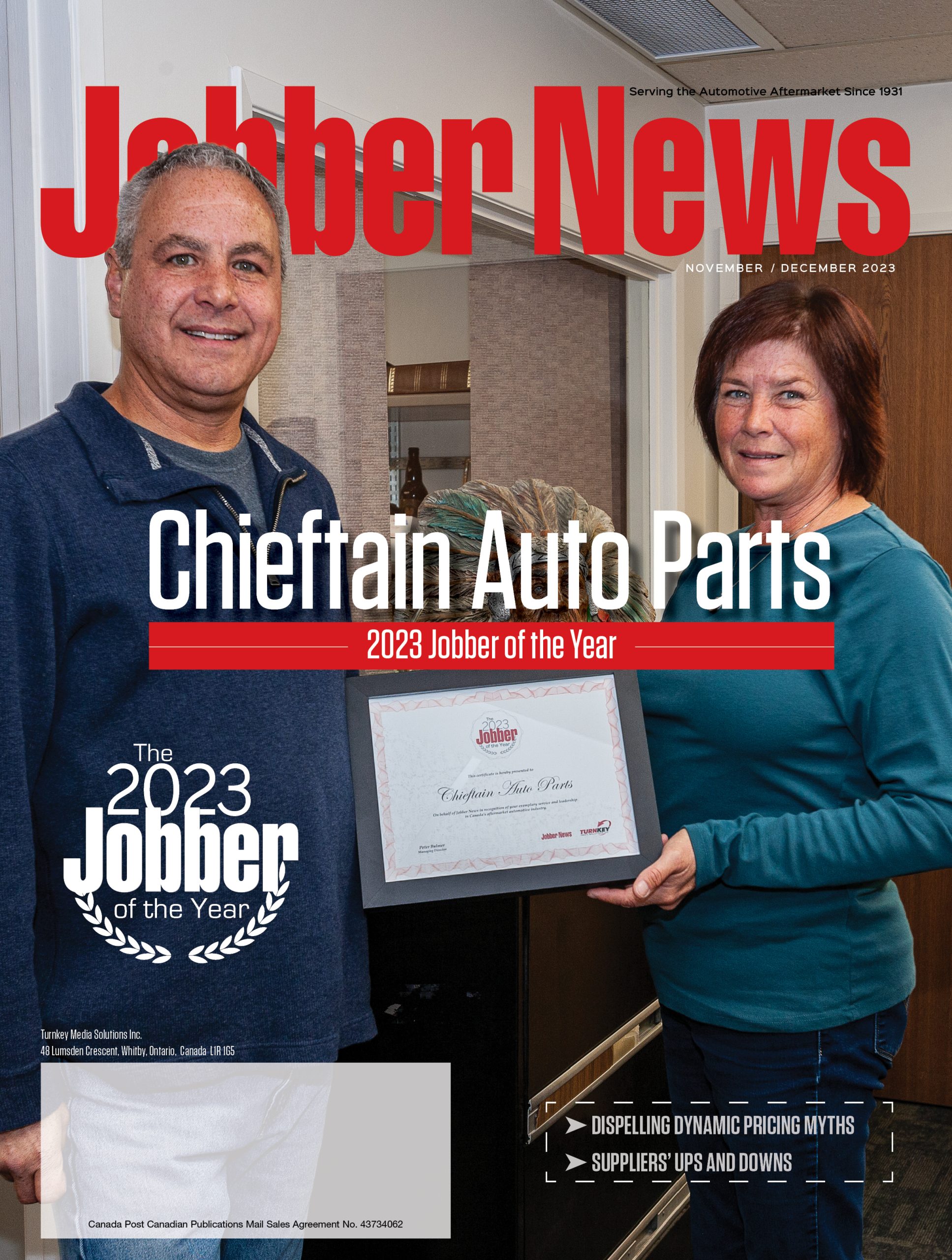
From the Magazine: Selling parts in the time of inflation
How can suppliers and distributors help shops struggling with rising part prices
 Grocery stores may be the poster child of rampant sticker shock in Canada. But the impact of inflation can be felt anywhere — everything from flights to hotels to cars has seen huge increases in price over the last two years.
Grocery stores may be the poster child of rampant sticker shock in Canada. But the impact of inflation can be felt anywhere — everything from flights to hotels to cars has seen huge increases in price over the last two years.
Replacement automotive part prices are no exception. Eucon data (based on U.S. and Canadian original equipment manufacturers and independent aftermarket prices) show that part costs increased by 20 per cent between 2019 and 2022. And, according to a recent report published by automotive aftermarket research firm IMR Inc., shops are beginning to feel the pinch.
IMR’s 2023 survey of 500 American independent workshops found that these businesses now view finding affordable parts as their top business challenge. When the survey first introduced the question in 2019, only 16.6 per cent of respondents viewed parts pricing as an issue — way down in the list below more overriding concerns such as diagnostics information and technician shortage.
“The finding affordable parts/parts pricing issue has not topped the list of concerns since we started asking this question at the end of 2019,” observed IMR chief executive officer Bill Thompson. “What is noticeable is the percentage of shops mentioning finding affordable parts has progressively increased over the past few years and in a short 12-month time frame went from 29.4 per cent to 45 per cent.”
He went on to note that the 2023 number is nearly three times higher than both early and mid-2020. More and more shops are indicating that they plan on buying more private-label parts.
Qualitative feedback gathered in the study reiterates two trends. First, most repair customers are asking for less expensive parts. Second, shops do not see this behaviour going away anytime soon.
I cannot imagine the experience of Canadian service shops being much different from what we see above. The problem may be worse here because the weakening Canadian dollar is causing faster price increases than in the U.S. For suppliers (national brands, in particular), retailers and distributors, these findings should be worrying.
Of course, the price hikes are largely beyond their control. But industry stakeholders can action some strategies to help the end customer – or, at the very least, soften the blow. Below are some ideas.
Deepen understanding of product, price dynamics
It seems obvious, but you would be surprised at how many industry competitors largely rely on “gut knowledge” to understand their product position in the market.
Pricing, product portfolio, and placement decisions are often made on small, static data sets that were probably updated a year ago. Even if we ignored the recent impact of inflation, growing product and pricing transparency have necessitated the constant monitoring of competitive and market conditions. Are your parts competitively priced? Are your competitors changing their product offering? How are they displaying their products? How are price changes in the market impacting your sales volume?
Companies need to create a robust, data-driven intelligence-gathering discipline to understand how the market is evolving and alter their tactical and strategic responses frequently to ensure they remain competitive.
Offer value-added services
In a market where cost becomes the overriding factor for a brand, products need to figure out other ways to stand out with customers. For those in the business of selling parts, differentiation can manifest in many ways.
Account managers and sales reps can increase focus on brand communication — why is Part A more expensive than Part B? Why should a customer spend additional dollars to buy a certain product? Other value-adds can be in the form of technician support such as virtual training sessions for purchasing a certain volume of parts.
Short-term focus on opening price points
Let’s face it. Some customers will never get past the price tag. So, you either lose these buyers or you can offer them a different tier of your brand experience.
The ‘good-better-best’ approach exists for some part types but, depending on sourcing flexibility, suppliers could potentially expand the concept to other products. A radiator may not need multiple tiers but at least a lower-cost product could help retain customers.
Enhance volume-based incentives
Workshops generally receive rebates and kickbacks based on their purchase habits. But extraordinary times often call for more-than-ordinary measures. Suppliers and distributors could make temporary tweaks to their incentive plans.
For instance, volume thresholds could be lowered so that customers can get to their rebate levels quicker. Alternatively, the kickback value could be increased. This strategy may have a slight impact on the bottom line but may be a better option for maintaining volume and brand loyalty than lowering prices for single units.
Kumar Saha is Toronto-based vice president (U.S.)/Managing Director (Canada) of global automotive data firm Eucon. He has been advising the North American automotive industry for over a decade and is a frequent conference speaker and media commentator
This article originally appeared in the May/June issue of Jobber News
Print this page
.png)








I understand that no one likes rising prices, but this shouldnt be our biggest challenge. Our business passes costs along. Now more than ever it is important to maintain our margins – as should have been the case all along. The net revenue increase from the costs going up, while maintaining margins, cushions the blow for other shop expenses growing with inflation. I think its important to remember, while we see the costs everyday, most customers see a total number at the bottom of their invoice. A quick “sorry Mr. Jones, but as you can see, the price of your brake job has increased $100 over the last few years, just as everything has skyrocketed”. They instantly know that you are telling it like it is, the entire world is in the same boat. Communication is key.